Without it, we can only stay on the ground, and the vertical, multi-level spaces would become an untouchable dream of us.
It is stair.
When did the first stair invent? In China, it can be traced back to 3000 BCE and earlier, the primitive Hemudu used a simple ladder which is considered as a prototype of the stair. They used the “stair” because they lived in “railing buildings” where they can escape from the wet earth, animals, and other dangers. In the Zhou dynasty, about 3000 years ago, the emperor climbed up thousands of staircases in the Tai Mountain which is considered as a sacred mountain to sacrifice the sky.
In western civilization, the outer stair of pyramids is one of the most famous ancient stairs. Mesoamerican pyramids form a prominent part of the ancient Mesoamerican architecture. Although similar in some ways to Egyptian pyramids, these New World structures have flat tops (many with temples on the top) and stairs ascending their faces.
The stair has been an important structure in a building since ancient times. It appears not only in every era but also in every architect, like the palace and religious building which implies a sense of power. When the style and pattern change along with time passed, stairs of different eras present the popularity, aesthetics, philosophy, and rhetoric representation at the time. These entitle the differences on stairs—— some are stocky, grand, or delicate. By combining dull lines, the stairs lead people to the sky, floating above the earth. The art of stairs is still developing.
Stairs in modern life are indispensable. When the corridor connects the building inside and outside, it is like the wild at the building’s back. The architectures are getting higher, ascending to the sky. The buildings have been getting higher and the skyscrapers head to more than 100 floors, which are common in metropolitans and become a symbol of the city.
ANCIENT STAIRS:
The Lost World Pyramid:
In Mayan Culture, people were keen to observe celestial bodies, and the main observation site was a religious building complex. The Lost World Pyramid is one of them.
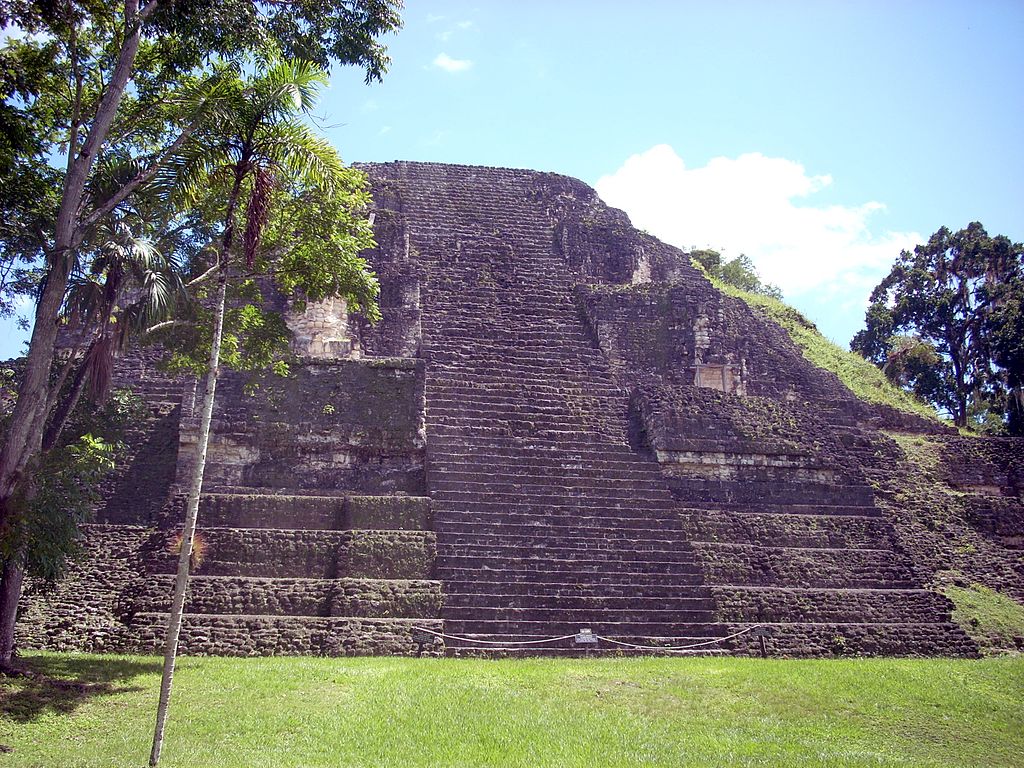
The Mundo Perdido (Spanish for "Lost World") is the largest ceremonial complex dating from the Preclassic period at the ancient Maya city of Tikal, in the Petén Department of northern Guatemala.[1] The complex was organised as a large E-Group astronomical complex consisting of a pyramid aligned with a platform to the east that supported three temples.
Things floating above human’s head are so mysterious, and stairs were seen as the leading road to get closer to heaven. Religion and power are usually combined. Represented in the pyramid, it is a symbol of climbing up height and gathering in the center. In addition to religious significance in ancient times, such activities as sacrifice and divination also had important political significance. In the ancient East, stairs also played a similar guiding and upward role. The sacredness of the heights is even more admirable. The emperors of ancient China always went to Mount Tai to worship the sky and heaven.
Temple of Heaven:

The Temple of Heaven is an imperial complex of religious buildings situated in the southeastern part of central Beijing. The complex was visited by the Emperors of the Ming and Qing dynasties for annual ceremonies of prayer to Heaven for a good harvest. In ancient Chinese philosophy, Earth was represented by a square and Heaven by a circle. The temple structure combines square and circle representing Heaven and Earth.
Try to imagine, the emperor walking step by step on the staircases, heading to the sacred place, with the worship of heaven, the footfall on the steps, echoing in the silent hall.
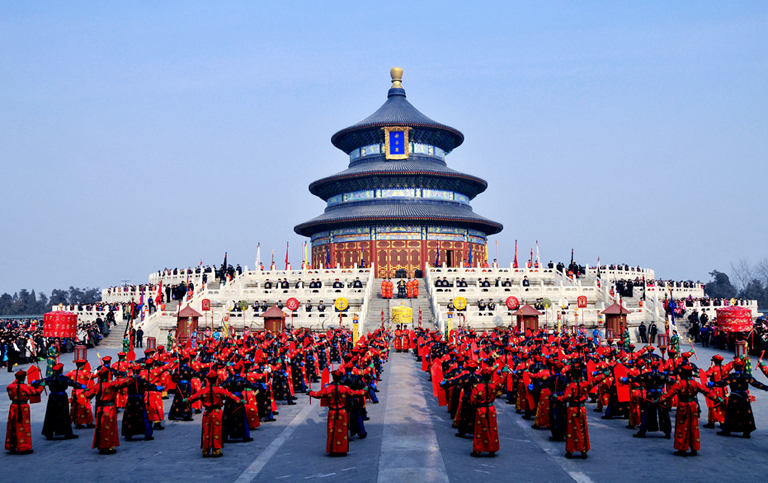
Stairs in our imagination: Hanging Garden of Babylon
The Hanging Gardens are the only one of the Seven Wonders for which the location has not been definitively established.
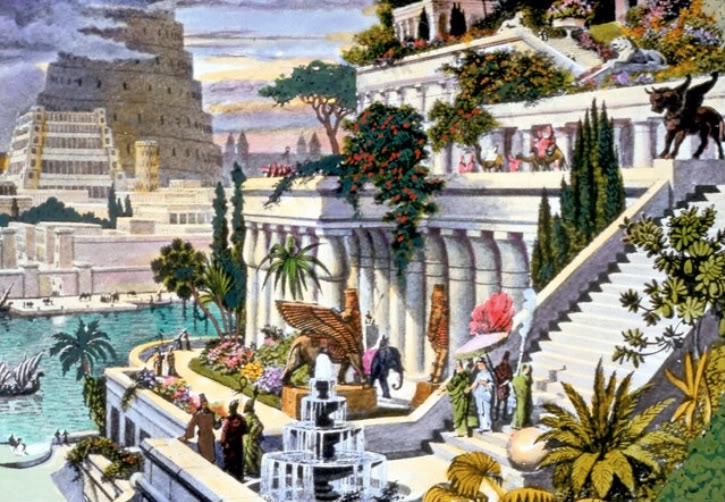
Berossus described the reign of Nebuchadnezzar II and is the only source to credit that king with the construction of the Hanging Gardens.
“In this palace he erected very high walls, supported by stone pillars; and by planting what was called a pensile paradise, and replenishing it with all sorts of trees, he rendered the prospect an exact resemblance of a mountainous country. This he did to gratify his queen, because she had been brought up in Media, and was fond of a mountainous situation.”
A step goes to a floating garden, one step closer to Heaven.
Modern Stairs:
Although today, we have elevators that make the ascending responsibility of stair transferred, people never stop in the pursuit of stair designs.
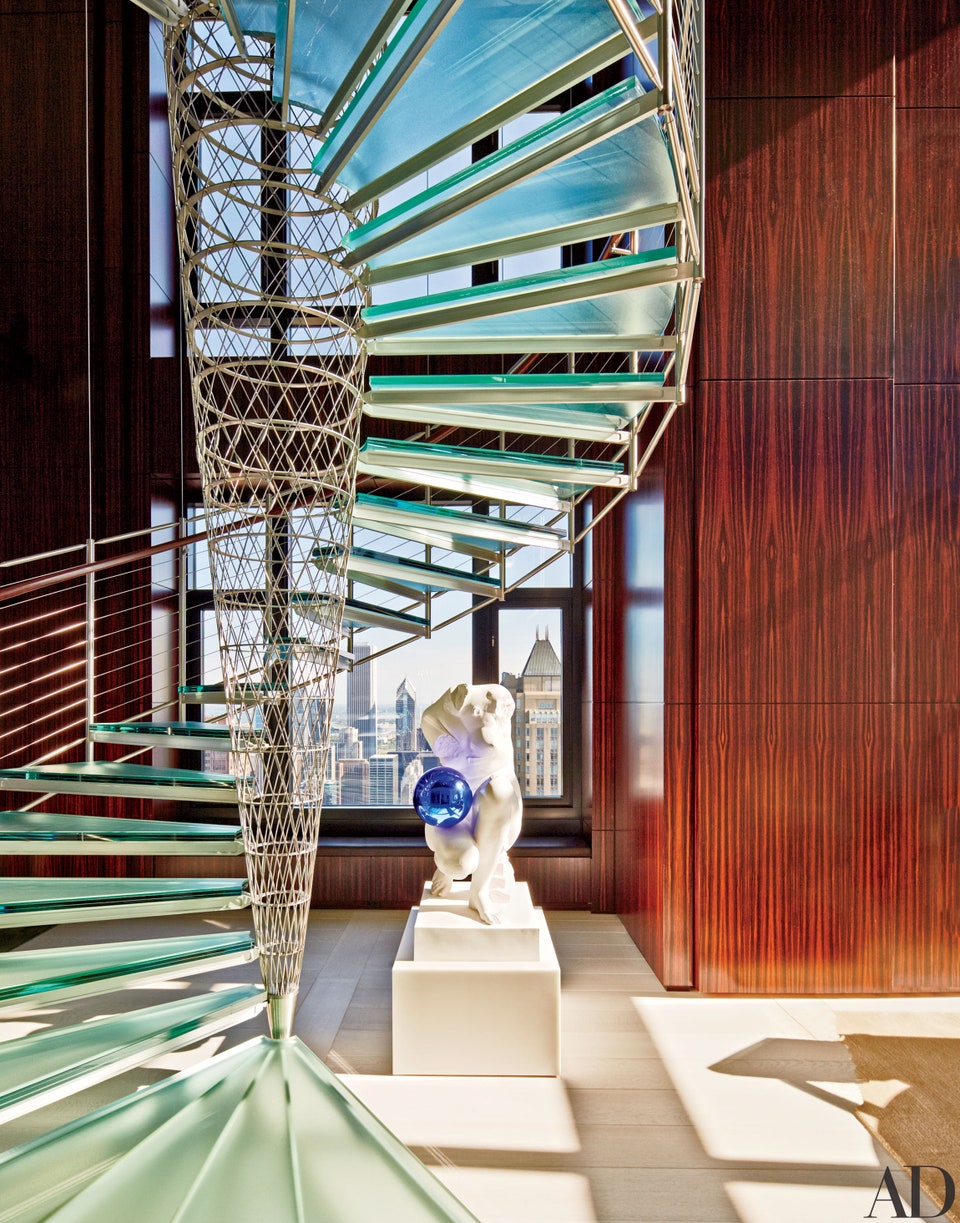
A Jeff Koons sculpture is placed at the foot of a spiral staircase by James Carpenter Design Assoc. in this Chicago apartment designed by Atelier AM.
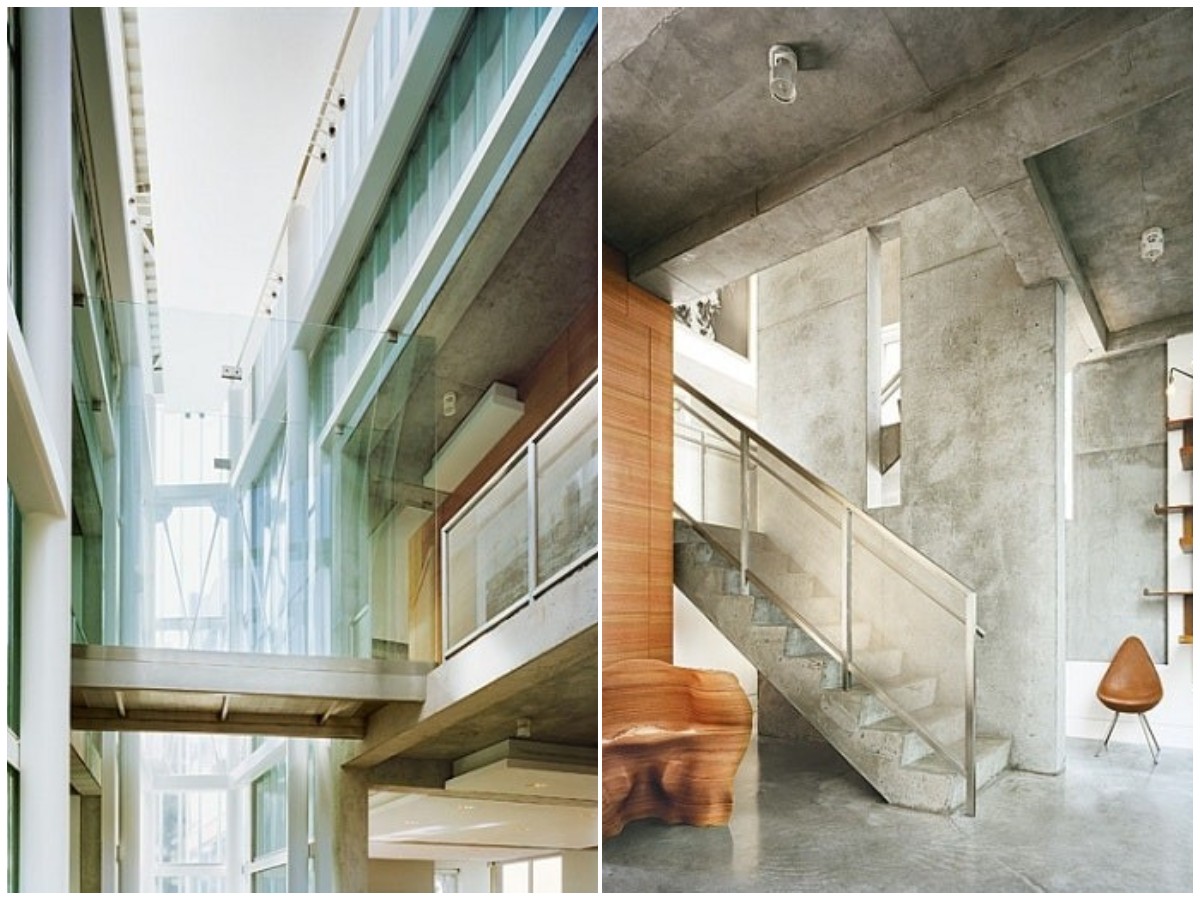
Concrete carries the day inside this home. Photographed by Michael Moran, Architectural Digest, June 2007
The floor plan is split by a wedge of channel glass, a feature that results in a natural light-filled corridor—a place where the architecture's structural components are especially evident.
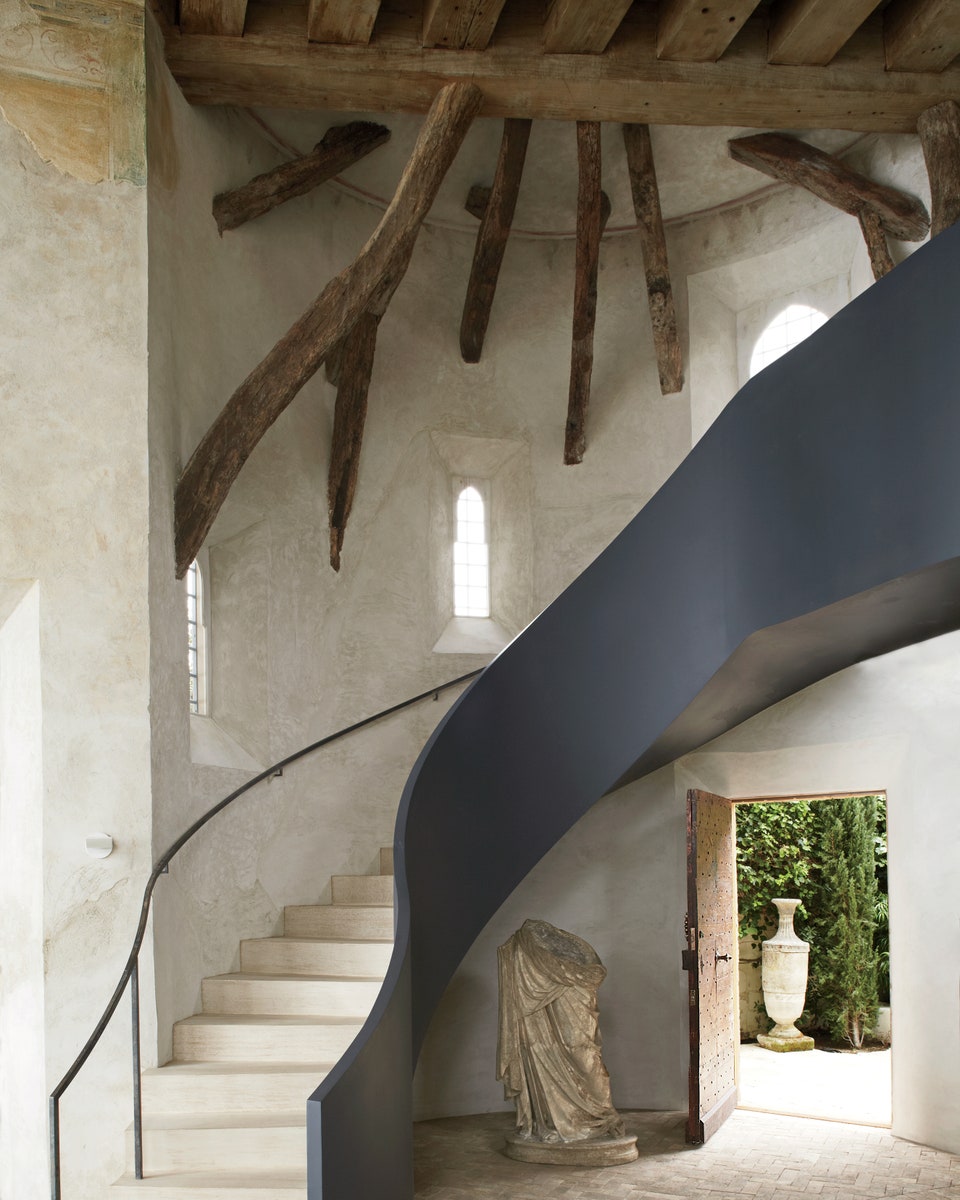
Designed by her groundskeeper, José Edis Aviles, the staircase includes a banister fashioned out of a sturdy tree branch. “This is an incredibly magical place,” Crow told Architectural Digest. “It has the best of everything California has to offer, but there’s also something deeper. The land has a fascinating energy.”
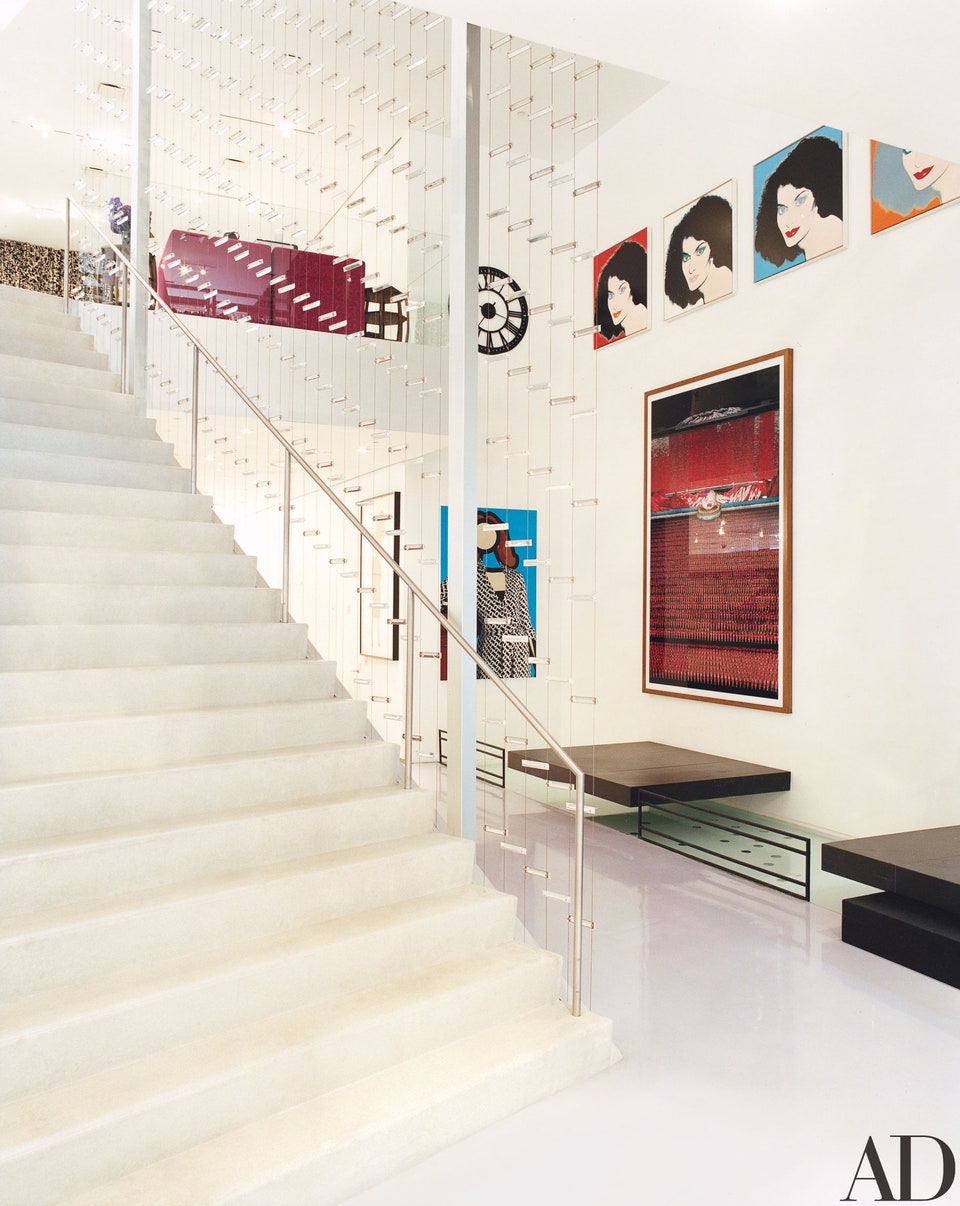
An interior belonging to the fashion legend. Photographed Francois Halard, Architectural Digest, March 2012
In most circumstances, you don’t need a complex stair design. A simple and neat staircase even makes your place special.
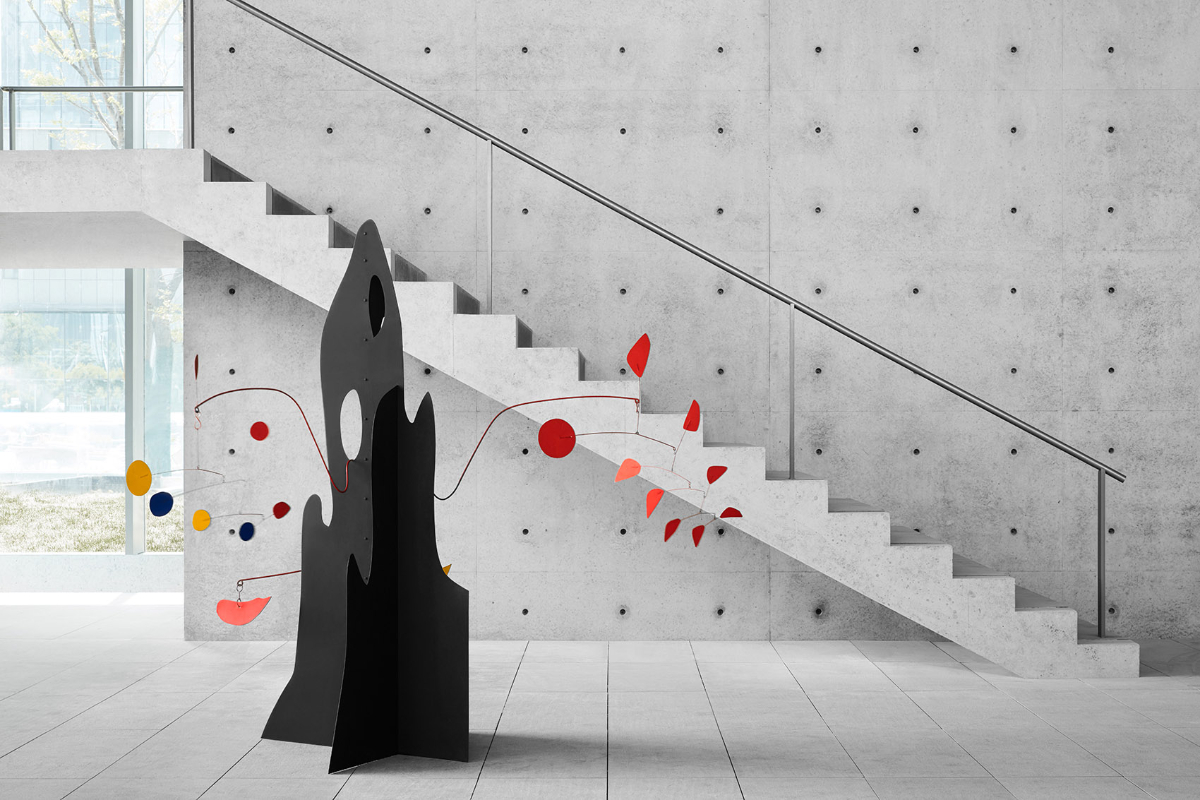
Taodao Ando’s classic slick concrete wall, and stainless steel staircase, He Art Museum
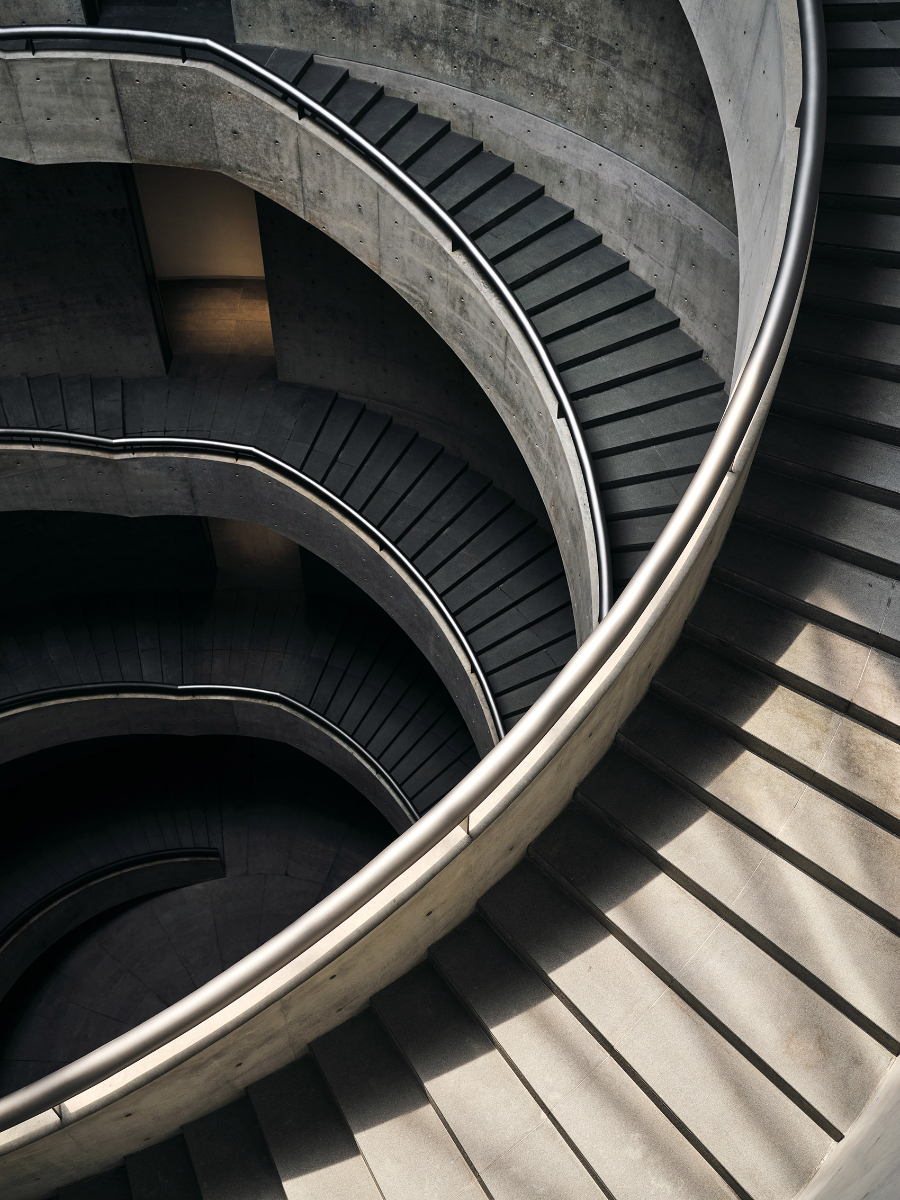
Double-Helix Staircase by Slick Concrete, He Art Museum
A stair is no longer a practical object only. Its extension reaches religious and political purposes, as well as aesthetic pursuant. Today, you can find the designs of staircases are so creative, making them important and outstanding in architectures. Either you go for a fancy stair, or you prefer simple, you can always make an attempt, and stainless steel will last your fantasy forever.
stair handrailstair handrailstair handrailstair handrailstair handrailstair handrailstair handrailstair handrail
